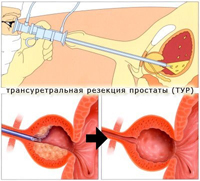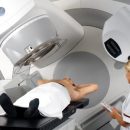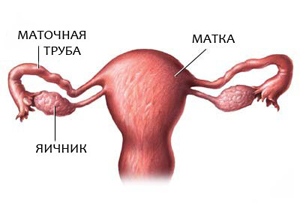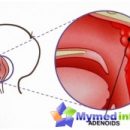What happens when translateral removal of a prostate site? When this operation is applied? Read in this article.
Content
The operation is carried out or under general anesthesia, or you make a spinal anesthesia, at which the sensitivity is blocked below the belt. Surgeon introduces a thin endoscopic tool and special blades scraping the crushed prostate fabrics. After this operation, patients are usually carried out in a hospital from one to three days. During the first few days, urine stands out through the catheter.
 Transuretral removal of prostate plot — The most common surgical operation with a benign hyperplasia of prostate. (DGPZH). The thin tool is introduced into the urethra to the place where it surrounds the prostate gland. Little blades «Scrap» Excess fabric prostate, improving urine passage.
Transuretral removal of prostate plot — The most common surgical operation with a benign hyperplasia of prostate. (DGPZH). The thin tool is introduced into the urethra to the place where it surrounds the prostate gland. Little blades «Scrap» Excess fabric prostate, improving urine passage.
Transuretral removal of the prostate plot very effectively and quickly facilitates the symptoms of the disease. Most men have an increase in urine jet enhancement. Sometimes after surgery in the urine, blood or loose blood clots appear. By the time of extracting from the hospital, the patient is already urinated independently. At first you can feel pain or strong urges when urine will pass through the operated area. These discomforts will disappear over time.
Exercises for the lower pelvic muscles (Kegel exercises) often help restore control over bladder. The recovery of sexual function usually leaves several weeks before the month. However, sometimes for complete recovery it may be necessary to one year.
Another unpleasant consequence of this operation can be the so-called «Dry orgasm» (reverse ejaculation). In this case, the violation of the sperm, instead of being thrown through the penis, moves up and falls into the bladder, which leads to infertility. However, taking into account that prostate adenoma is most often developing among enough adult men, usually already having grandchildren, this complication rarely scares patients.
Transuretral removal of the prostate plot can also cause a narrowing of urethra or education in it. This, however, is treated with simple stretching outpatient procedures.
From 10 to 20% of men who have undergone transurethral removal of the prostate section, need a re-operation after 10-15 years, since the tissues of the prostate gland grow again.









